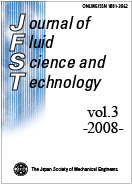Volume 3, Issue 5
Displaying 1-10 of 10 articles from this issue
- |<
- <
- 1
- >
- >|
Papers
-
2008 Volume 3 Issue 5 Pages 598-609
Published: 2008
Released on J-STAGE: August 01, 2008
Download PDF (965K) -
2008 Volume 3 Issue 5 Pages 610-621
Published: 2008
Released on J-STAGE: August 01, 2008
Download PDF (1701K) -
2008 Volume 3 Issue 5 Pages 622-632
Published: 2008
Released on J-STAGE: August 01, 2008
Download PDF (813K) -
2008 Volume 3 Issue 5 Pages 633-644
Published: 2008
Released on J-STAGE: August 04, 2008
Download PDF (1661K) -
2008 Volume 3 Issue 5 Pages 645-654
Published: 2008
Released on J-STAGE: August 04, 2008
Download PDF (428K) -
2008 Volume 3 Issue 5 Pages 655-666
Published: 2008
Released on J-STAGE: August 04, 2008
Download PDF (981K) -
2008 Volume 3 Issue 5 Pages 667-677
Published: 2008
Released on J-STAGE: August 15, 2008
Download PDF (545K) -
2008 Volume 3 Issue 5 Pages 678-689
Published: 2008
Released on J-STAGE: September 09, 2008
Download PDF (1064K) -
2008 Volume 3 Issue 5 Pages 690-700
Published: 2008
Released on J-STAGE: September 09, 2008
Download PDF (367K) -
2008 Volume 3 Issue 5 Pages 701-711
Published: 2008
Released on J-STAGE: September 09, 2008
Download PDF (368K)
- |<
- <
- 1
- >
- >|
